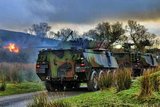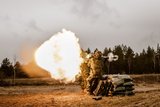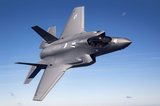Afghan security force shrinks sharply: US watchdog
The Taliban and other insurgent groups are gaining control over increasing numbers of the Afghan population and the strength of local security forces has declined sharply, a US government watchdog warned Tuesday.
The latest report from the Special Inspector General for Afghanistan Reconstruction (SIGAR) paints a grim picture of the security situation in the war-torn country, and comes even as the Pentagon asserts that Afghan troops and US-led NATO forces are making steady progress in the grueling, 16.5-year-old conflict.
It also comes on the heels of another deadly day in the capital, when twin blasts killed at least 25 people, including Agence France-Presse chief photographer for Afghanistan Shah Marai and eight other journalists.
According to SIGAR, the strength of the Afghan security forces dropped by about 10 percent over the course of a year -- falling to a total size of
296,409 personnel in the army and police forces as of January 31.
Militants including the Taliban and the Islamic State group have stepped up their attacks on beleaguered Afghan troops and police in recent months, sapping morale already hit by desertions and corruption.
US forces used to provide SIGAR with the number of Afghan troops being killed - the figures were more than 5,000 each year - but that information is now classified at the request of the Afghan government.
At the same time, the Taliban and other insurgent groups now control or influence 14.5 percent of Afghanistan's 407 districts -- the highest level since SIGAR started recording such data in late 2015.
The government, meanwhile, controls 56.3 percent of the districts, with the remainder considered 'contested'.
The varying population sizes of each district means that since August 2016, Afghan government control over its people has decreased.
'The overall trend for the insurgency is rising control over the population (from nine percent in August 2016 to 12 percent in January 2018),' the SIGAR report states.
The document also found increasing numbers of civilian deaths as the Afghan air force has stepped up its operations while NATO has reduced its air strikes.
The facts on the ground paint a different narrative than the one pushed by the Pentagon, which insists the Taliban are weary and now have elements willing to negotiate for peace.
Ten journalists were among dozens killed in multiple attacks across Afghanistan Monday, in the deadliest day for the country's media since 2001.
Two suicide blasts in Kabul killed 25 people including AFP's Marai along with at least eight other journalists, in what Reporters Without Borders said was the most lethal single attack on the media since the fall of the Taliban.
The attack was claimed by IS, which has established a footprint in Afghanistan, especially in Nangarhar.
More from Defence Notes
-
![Canada set to look away from its neighbour and across the Atlantic for partners]()
Canada set to look away from its neighbour and across the Atlantic for partners
While non-EU UK struggles to join the Security Action for Europe initiative, which provides loans for defence programmes, Canada has become the first country outside Europe to get access – and did so for a nominal fee.
-
![NATO experiments with solutions to integrate networks, AI and uncrewed systems]()
NATO experiments with solutions to integrate networks, AI and uncrewed systems
During the latest edition of the NATO DiBaX, the alliance tested multiple capabilities to inform requirements for future efforts.
-
![Leonardo unveils plans for Michelangelo air defence dome]()
Leonardo unveils plans for Michelangelo air defence dome
The new multi-layered defence system will harness AI to neutralise airborne threats and protect Europe from Russian aggression.























